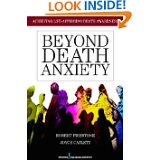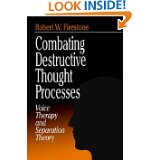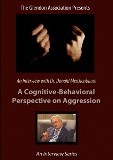Substance Abuse and the Teenage Mind
 Adolescence arrives with a surge of energy. It pushes many young people to try new things, make new friends, depend less on parents, and live more passionately.
Adolescence arrives with a surge of energy. It pushes many young people to try new things, make new friends, depend less on parents, and live more passionately.
But as an adult, your role is still important.
Adolescence is also a time when some explore alcohol or drugs (such as heroin, cocaine, marijuana, and prescription medicine, among other substances). All too often, tragic results follow.
How can we help more teens and families avoid or repair the damage and danger of substance abuse?
Knowing more about adolescents’ development will help us better understand their needs and respond more effectively.
Adolescence Spans More Years Than Most People Realize
Adolescence starts at about age 11 in girls, 12½ in boys, and continues into a person’s mid-20s. The brain changes dramatically during this time and does not fully develop until age 27.
Brain remodeling refers to the process of physical and neurological transformation. The body creates more neurons than it needs in childhood. The unneeded ones die off naturally — a process of synaptic pruning.
A performance-enhancing myelin sheath allows energy to flow up to 3000 times faster along the brain’s circuits. The brain becomes more specialized, efficient, and more integrated.
New Thoughts, Feelings and Vulnerabilities Emerge
New ways of thinking, feeling, and behaving appear — sometimes dramatically — during this time.
Four qualities emerge with adolescence: “Novelty seeking, social engagement, increased emotional intensity and creative exploration,” says Daniel Siegel in his book Brainstorm: The Power and Purpose of the Teenage Brain. These qualities inspire many young people to do amazing and wonderful things. However, without the guidance of compassionate adults, these drives can also misguide some teens toward dangerous, high-risk, even deadly behavior.
How vulnerable are adolescents to risky and dangerous substance use behaviors? The numbers are staggering. While they do not predict the risk for any one person, they point to the need to be more aware of the facts:
- One in five youth between the ages of 12 and 17 in the United States have an abusive/dependent or problematic use of illicit drugs or alcohol.
- Alcohol poisoning and related incidents cause 4,358 deaths each year for youth under age 21 and lead to emergency-room injuries for another 190,000 people in this age group each year. (NIAA, Underage Drinking)
- Over 27% of 8th, 10th, and 12th graders in the United States report past-year use of an illicit drug other than alcohol. (NIDA DrugFacts, December 2014)
- After marijuana, prescription and over the counter medications accounted for most illegal drug use by 12th graders in 2013.
- Underage drinking accounts for 11% of all alcohol consumed in the United States, 90% of which is consumed in binge drinking. (CDC Fact Sheets – Underage Drinking)
- Youth who drink or use drugs are more likely to become victims of sexual or physical assault.
- The average onset of first use of drugs or alcohol for boys is 12, for girls it is 12½.
- For those who began consuming alcohol by age 15, 47% experienced alcohol dependence later in life, compared to 9% who began at age 21 or older. (NCADD FAQ)
Substance Use Impacts Teen Brain Development and Thinking
The adolescent brain and body are still growing and developing. The influence of drugs and alcohol on brain chemistry can impact normal development in ways that research is still uncovering.
Adolescents often feel more powerfully alive when doing something that engages them. Substance use enhances this new level of sensation.
As emotions return to normal, the baseline level of dopamine may fall lower in teens. This may prompt an even stronger drive to use again.
Feelings of vitality and excitement can inspire increasingly creative — or dangerous — choices. For example, underage youth figure out how to “get alcohol” — not to explore the taste — but to ”get drunk.”
Substance use may enhance the thrill of simply being alive. This can alter a young person’s thinking about safety in favor of seeking sensational rewards.
Worried about risky behavior? Talk to your teen about their alcohol or drug use.
Trauma Impacts Emotional Regulation and Drives Substance Use
Adolescents may turn to alcohol and other drugs to manage intense emotions and mood.
It is likely that substance use starts out as experimentation and the outcome of feeling less or feeling less badly becomes a coping strategy to make the chaos inside more manageable.
Teens (and many adults too) may not realize their emotions are unmanageable due to trauma:
- One in four children and adolescents in the US experiences at least one potentially traumatic event before the age of 16.
- Four out of 10 adolescents have witnessed violence.
- 17% have been physically assaulted.
- 8% have experienced sexual assault.
- More than 13% of 17 year olds (one in eight) have experienced posttraumatic stress disorder in their lives.
- More than half of African-American, Hispanic, and Native American adolescents have witnessed violence in their lifetimes.
Substance use is a temporary escape from unpleasant experiences, negative or difficult emotions, or reminders of past trauma.
In the words of one teen with unresolved trauma, using “Does not keep me happy – it keeps me from being so sad I want to die.”
Early onset of substance use, especially before age 13, is a warning sign that childhood trauma may be driving using behavior.
Peer and Family Relationships
Peer pressure is actually the compelling need for peer acceptance — to be wanted and valued in a group of friends. The need to fit in with one’s peers is essential to learning how to form healthy bonds and connections for survival. But this drive can also sway decisions in favor of using when:
- Teens believe “everyone else” is doing it and want to blend in.
- Using is a way of spending time with friends, of being accepted, of becoming popular, of enhancing social and other activities.
- They have not learned to navigate fears that if they refuse, they might alienate potential friends.
- Teens want to pursue a curiosity with peers.
Addiction follows a path from experimentation to social misuse to dependence. Any point on this path can stunt emotional growth. It sidetracks a person from forming healthy relationships we all need for wellbeing.
Many teens report guilt, shame, and low self-esteem increase because of using behavior.
While they may not have started using with the intent to numb overwhelming emotions, this is the eventual outcome.
Recovery for Adolescents
Work in therapy involves acknowledging the teen’s real need for understanding and acceptance.
Trauma-informed care is essential to addiction recovery. It enables a person to recognize and process trauma and resolve painful emotions. A healthy sense of interdependence comes as teens can embrace both their needs for peer acceptance and their still vital reliance on parents, family, and mentors.
One of the biggest treatment challenges is to engage positive family support, especially if parents expect therapy to “fix” the substance use problem without their involvement.
The road to recovery is much smoother when parents and therapist decide to work together. We commit to working with the family system instead of fighting it. This is part of a strengths-based approach: It strengthens the bonds that adolescents need.
There is no quick fix for substance use, for teens or for anyone.
A trauma-informed approach to therapy offers safety and connection with a trustworthy adult ally.
Recovery involves learning about trauma, understanding and learning emotional regulation and what self-care really means during the dynamic teenage years.
The most important thing is to get help as soon as possible. If you are worried about your teen’s behavior, take steps to find a good trauma-informed therapist.
There is hope. Teens with substance abuse can recover and can become adults with the strength of healthy, empowering experiences and relationships from their adolescent years.
Tags: addiction to substances, adolescents, alcohol, drugs, parenting advice, parents, substance abuse, teen, teenagers













Leave a Reply